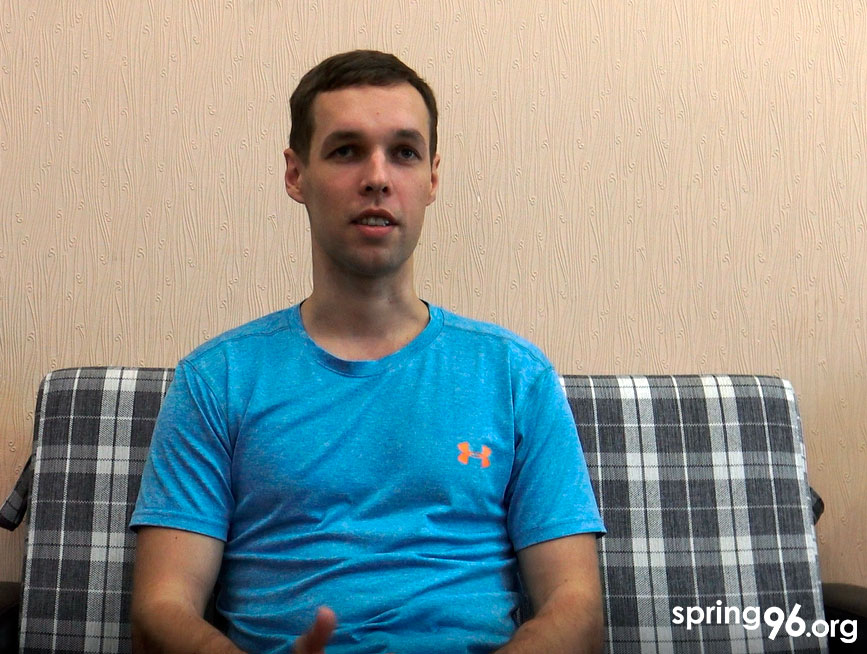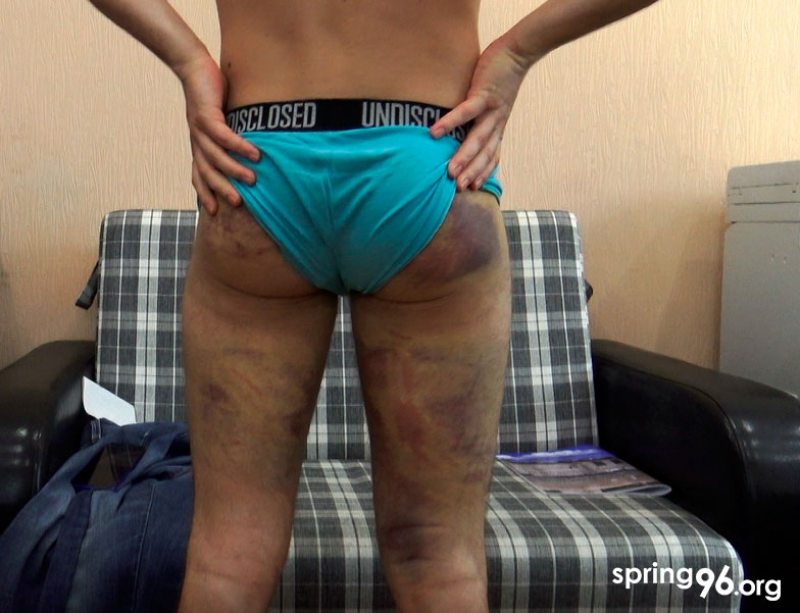“Now we’ll show you how to s..t your pants." Survivor stories
The Human Rights Center “Viasna” and the World Organization Against Torture (OMCT) launched a campaign to document cases of torture, cruel, inhuman and degrading treatment of protesters on August 9-13. Some testimonies of people who survived torture and violence will be published on our website as evidence of crimes committed by security forces.
On August 11, Dzianis Selivankin was approached by two police officers at the intersection of Pieramožcaŭ Avenue and Mieĺnikajte Street. They asked for his ID. Dzianis replied that he had no passport with him. Then the young man was forced to unlock his smartphone. What they saw in Dzianis’s Telegram enraged them.
“In short, one police officer twisted my arm behind my back and said, “You’re coming with us!” There were six more riot police officers. They were dressed in uniform, in balaclavas, there were no special signs, no numbers, of course, and no names, either. They took me and my phone to some of their commanders. They looked at the photos on my smartphone and at my Telegram channels. I never saw my phone again until I was released.”
Dzianis was taken into a car that looked like a police van, only there were no cells for the detainee. There were just benches on both sides, on which there were eight riot policemen.
“And they said to me, “Well, sit down on the floor, now we’ll talk to you. And I said, “How do I sit down?” And they started beating me right away so that I fell to the floor. Then they started asking, “How much did you get paid, why do you go protest?”
They asked several times how much I was paid, why I was against the people, why I voted for Tsikhanouskaya. I said that no one paid me anything. And they said, “How come?!”
They beat me with their truncheons. I drew my knees up to my chest and covered my head to avoid blows in the head. They said, “Remove your hands!” When I refused, they twisted my fingers and raised my head by the hair.
When they saw that blows on the back did not hurt me much, they turn me around and asked, “Do you know how people s..t their pants?”. I say, “No, I don't know.” And they said, “Now we'll show you, get down on your knees.” I tried to lie down, to cover my head, but they again stretched me by force, put me on my knees and then hit me with their truncheons and kicked me in the buttocks. They mainly aimed at one point - the lower part of the buttocks. And then they saw that the blows to my legs and buttocks caused me more pain, and they deliberately beat me in that area. Then, when I was yelling like hell, they threw me out and put me to another police van, where there were other detainees.”
Then, they were packing the bus with detainees, and twenty-four people were held there for hours, and only when it was full, they were taken to the Center for the Confinement of Offenders.
“In Akrescin Street [Center for the Confinement of Offenders in Minsk], we were in the police van for some time, and we heard screams from outside. Then we were told to come out with our heads down. There was a corridor of riot policemen who beat us with truncheons from all sides. Then we were thrown to the ground and forced to kneel. In this position, we were kept for an hour and a half, with our arms behind our backs. Naturally, my legs were numb. Those who were trying to lift their butts were approached by riot policemen with truncheons. “Ass down!” they shouted. At seven in the morning, when they were pushing us along the corridor, they also beat us with truncheons, but the main beatings took place in the police bus. They deliberately did not do it outside so that no one could see it, but beat us inside the bus.”
According to Selivankin, 127 people were held outside for twelve hours. Many were in shorts and T-shirts. It was very cold, they couldn’t sleep, and there was no toilet. One guy had his shorts cut up and thrown away because he had white ribbons on them. All he was wearing were his underpants.
"Sometimes, they gave us water. For 127 people, they gave fifteen liters in twelve hours. Then somewhere around seven in the evening, we were transferred to a cell with 10-12 people. I ended up in cell number eleven, which was designed for two detainees. There were twenty-four of us there.
After we were brought there and I was in a cell, Deputy Interior Minister Barsukou came to us with a reporter (a girl) and asked us several questions. But before that, he talked to us without the reporter. We were warned that whether we would be released or not depended on how we answered his questions. He asked, “Were you beaten in the cell? Did they beat you in the cell?” Naturally, they did not beat us in the cell. We were thoroughly treated before. Then we stayed in the cell for more than twenty-four hours and we were released.”
Dzianis Selivankin gives special thanks to the volunteers who met the prisoner after his release: “When you walk free, you feel that not everything is lost in this country”.



















